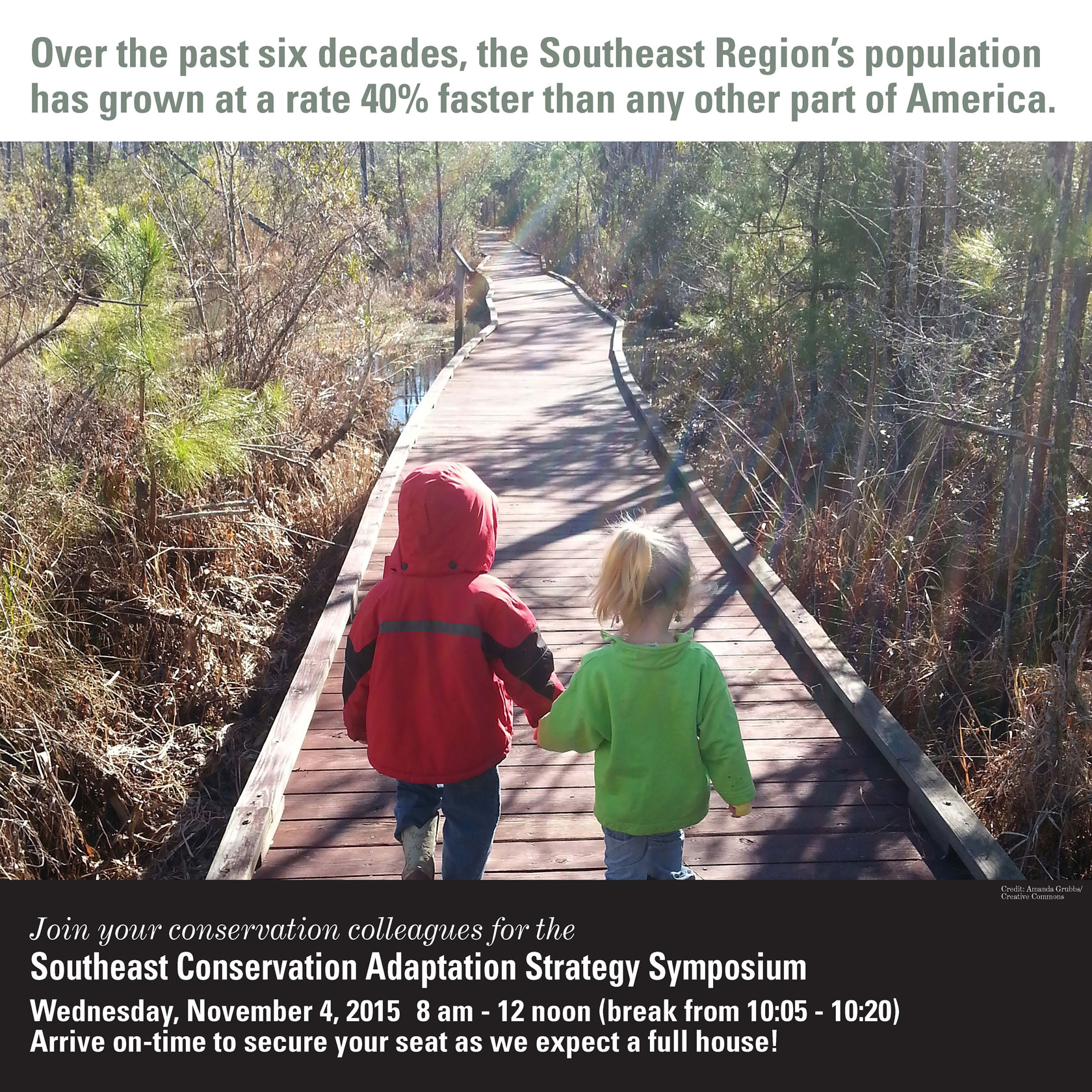From the archive - Reflections on the Southeast Conservation Adaptation Strategy symposium

Wow–what an exciting SEAFWA conference! As you probably heard, the Southeast Association of Fish and Wildlife Agencies hosted its 69th annual conference earlier this week in Asheville, NC. The theme was “conserving large landscapes”, and with the support of the conference host (the NC Wildlife Resources Commission), your South Atlantic LCC staff, Steering Committee members, and Blueprint users had plenty of fabulous opportunities to showcase the Conservation Blueprint.
A symposium on SECAS, the Southeast Conservation Adaptation Strategy, was held on Wednesday, highlighting the ways that conservation practitioners in the Southeast, working through the Landscape Conservation Cooperatives, are developing a shared vision for sustaining fish and wildlife into the future. SECAS provides the framework to develop not only that shared vision, but a shared understanding of the threats we face, a shared approach for prioritizing conservation action to address those threats, and shared responsibilities for accomplishing our conservation goals.
Thanks to the inspired moderating of Cynthia Edwards with the Gulf Coast Prairie LCC, the whole symposium was laid out in a brilliant allegory to Star Wars. Everything from…
…the initial vision of an ecologically connected network of lands and waters…
…to the integration of different spatial priorities across the Southeast, using SECAS as a kind of “command center”…
…to conquering today’s emerging threats, in other words “blowing up the Death Star” of climate change and urbanization.
Hmm, maybe you had to be there, but trust me–it was pretty awesome. Especially when Greg Wathen with the Gulf Coastal Plains and Ozarks LCC announced his son was actually named Luke, and gave an excellent off-the-cuff Darth Vader impression.
In particular, your cooperative staff took away three key points from this symposium, which featured presentations from staff of seven Southeast LCCs and lots of great discussion with individuals from the federal, state, and nonprofit organizations that are part of those cooperatives.
-
The symposium generated a huge turnout, with somewhere between 90-120 people attending throughout the morning as folks filtered in and out. Conservation practitioners in the Southeast obviously recognize the need for an integrated, partnership-driven approach to identifying shared conservation priorities and developing strategies to address common threats.
-
One goal of SECAS is integrating the spatial priorities of all Southeast LCCs into a cohesive plan. Since the SEAFWA state agency directors and the twelve federal agencies comprising the Southeast Natural Resources Leadership group called for the SECAS initiative four years ago, the LCCs have made enormous progress toward mapping out conservation focus areas and natural and cultural resource values. The South Atlantic is already integrating Blueprint 2.0 with the Critical Lands and Waters Identification Project (CLIP) used by Peninsular Florida LCC, and neighboring LCCs are releasing their landscape conservation designs as well–just like we heard at the meeting of the three Virginia LCCs back in September. While the first stitched-together Southeast-wide Blueprint won’t be perfect, Version 1.0 will be released in fall of next year. And just like the South Atlantic Blueprint, the Southeast version will be an iterative, living plan that will continue to improve as we refine the underlying science and work with conservation practitioners to understand their needs.
-
Each of the LCCs in the Southeast may be using different words and different methods, but central themes emerged over and over again. As self-directed partnerships, LCCs tackle our unique challenges and opportunities in the way that works best for everyone at the table. But whether you call them indicators, targets, metrics, focal species, or priority resources, we’re all using shared measures of success. Whether you use Zonation, Marxan, or some other modelling process, our priorities are all grounded in data. Regardless of how you perform your connectivity analysis, we’re all building an ecologically connected network with hubs and corridors.
Your staff are all feeling really encouraged about the future of conservation in the Southeast! Thanks to everyone who attended and made this symposium so successful.